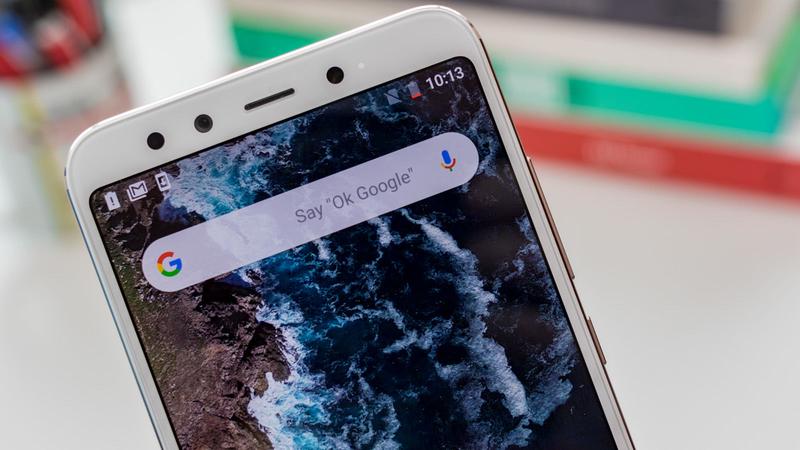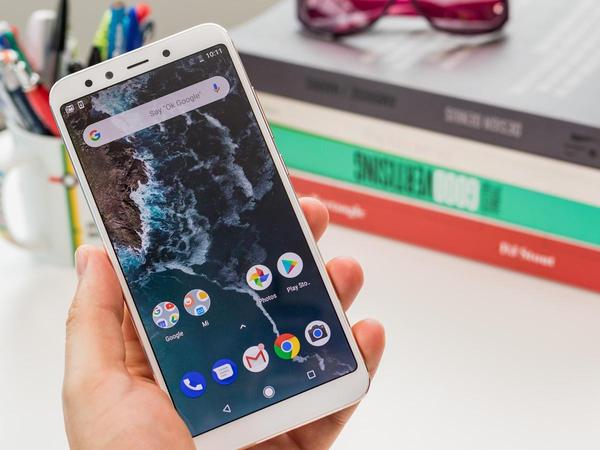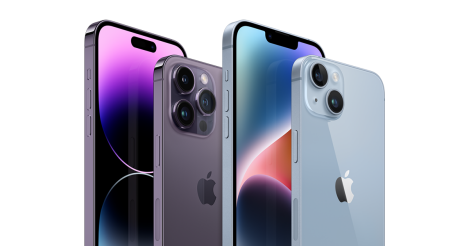Mi A2 Review: Xiaomi meets Android One
Xiaomi's Mi A2 has now been superceded by the Mi A3, but this model is not yet officially available in the UK. Buy the Mi A2 if the high value and excellent quality of Xiaomi phones appeals, but you're not quite sure about ditching standard Android in place of MIUI.
Xiaomi makes some incredible-value smartphones for users in China, India and more recently in Spain, France and Italy. Its devices are now officially available in the UK, so we no longer have to import them from China, but still have to familiarise ourselves with the MIUI interface. That is, of course, unless they purchase the Mi A2 or Mi A2 Lite, global versions of the Mi 6X and Redmi 6 Pro running pure Android One.
Now over a year old, the Mi A2 is still one of the best budget- to mid-range phones you'll find in the UK. Though it's no longer at the top of our chart, with phones such as the Redmi Note 7 ranking higher, its age means you'll find some cracking deals on this older handset. The best deal we've found is at Laptops Direct for under £150.
The official retail price from the UK Mi Store is £259/£319, but it appears to be out of stock there at the time of writing.
Also see: Best Xiaomi Deals
(You'll also like: Best Xiaomi phones)
What's the difference between Mi A2 and Mi A2 Lite?
With just £15 between the two Mi A2 models you probably wouldn't expect many features to differentiate them, but you would be surprised. This can be explained by the fact these two phones were not designed as a pair, they are simply Android One versions of two other phones made by Xiaomi: the Mi 6X and Redmi 6 Pro. In China they're not even in the same product line, with Redmi being the company's budget series, and really they are nothing alike.
At first glance they look similar, with a raised dual-lens camera and fingerprint sensor at the rear, slim bezels and similar curves, but that's just the Mi branding. When you'll look closer you'll notice many more differences.
Let's start with the screen notch which, bizarrely, is found on the cheaper Lite model rather than the standard Mi A2. The concept of a screen notch is growing on us, thanks to the Mi 8. Because it's a relatively new thing in the smartphone world it allows cheaper phones to look current and trendy. But given the choice we'd still rather have no notch and a slimmed-down top bezel.
That's exactly what you get here with the Mi A2. Its bezels are not as slim as what you might find on Samsung Galaxy or LG G-series flagships, for example, but combined with an 18:9 display they lend that same all-screen look that is sought after by phone buyers right now.
Another obvious difference is found at the rear. On the Lite model you'll find plastic end caps on an otherwise full metal jacket, but the Mi A2 does away with these in favour of a unibody metal design and unobtrusive antenna lines running top and bottom.
You can't easily tell by looking, but the camera lenses visible here have also been boosted, from 12Mp + 5Mp on the Lite to 12Mp + 20Mp on the A2. And round the front the Mi A2 has a second 20Mp selfie camera where the Lite has just 5Mp.
Look to the bottom edge and you'll see that rather than the Mi A2 Lite's old-hat Micro-USB port here there is forward-facing, reversible USB-C. But this does also bring about another design feature that some users won't be quite so happy about: there's no headphone jack. (You'll find a 3.5mm to USB-C adaptor in the box, along with a handy silicone case for the Mi A2.)
The Mi A2 is also noticeably slimmer than the Mi A2 Lite with a 7.3mm chassis against its 8.75mm, partly achieved by its lower-capacity 3,010mAh battery where the Lite has 4,000mAh. It's wider and taller too, though, with a slightly larger 5.99in screen (Mi A2 Lite is 5.84in).
There are still more differences that are invisible to the eye. Inside we find the Snapdragon 660 processor, Adreno 512 GPU and up to 6GB of RAM in place of the Lite's Snapdragon 625, Adreno 506 GPU and up to 4GB of RAM. Performance is higher for the Mi A2, and especially in gaming, but for overall performance there is not a dramatic increase.
Mi A2 Design & Build
The Mi A2 is a good-looking phone at this price point, and feels reassuringly well built with its metal body and buttons. Thanks to the slim side bezels and tall aspect ratio this is a phablet that can be easily held and managed in one hand, feeling more compact than its 5.99in screen size might suggest.
This is of course helped by the slim build, skinny waistline and rounded edges. There's a chamfered edge between the metal frame and screen glass, which gives the impression of a bit of glitz.
At 7.3mm the Mi A2 is almost too slim, however. The body isn't quite fat enough for the USB-C port, which means it's more exposed at the rear from the front. This had no ill effects in our tests, mind, and the cable felt as though it was firmly held in place while charging.
It's more noticeable with the rear camera, though, and with two large lenses the assembly sticks out from the body rather than offering a smooth finish. Positioned in the top left corner it does rock a little on a flat surface as a result, but the fact there are two cameras means the raised area covers a larger surface area and therefore makes it more stable than had there been only one.
We tested the gold model, which has a very pinky hue and a white front fascia, which isn't particularly to our personal taste but will be to others. This version seems to have rather a lot going on above the screen in terms of sensors, LEDs and cameras, which would be less noticeable on the black model, but that's arguably true of all white-fronted phones.
The screen itself is very good, and as we've mentioned elsewhere in this review a 5.99in panel with a tall 18:9 aspect ratio. It has a Full-HD+ resolution of 2160x1080 pixels, which is the maximum you'll see in any Xiaomi phone, but it's high enough for very clear reproduction of text and images. The pixel density is 403ppi.
This is an IPS panel, which means colours are very realistic and viewing angles are strong. It has a 1500:1 contrast ratio, and using a Spyder tool we measured the maximum screen brightness at 369cd/m2. That's pretty good for a budget phone.

Mi A2 Core Hardware & Performance
Running the mid-range Snapdragon 660 processor at 2.2GHz with integrated Adreno 512 graphics and up to 6GB of RAM (our sample has 4GB of memory), the Mi A2 is capable of strong daily performance. This is the same processor as found in the Samsung Galaxy A9, Nokia 7 Plus, BlackBerry Key2 and Oppo R11.
In terms of synthetic benchmarks its general performance scores are a little over half that of the most expensive flagship phones you can buy, but significantly higher than most budget phones.
What really counts, of course, is real-world usage, and the clean Android One operating system runs super smooth on this hardware, with no noticeable lag in use.
We've listed our benchmark results in the chart below. It's interesting to see there's not a huge difference between the general processing performance scores of the Mi A2 and Mi A2 Lite (measured using Geekbench 4), but the Mi A2 is capable of much faster framerates (GFXBench) which are important for gaming and watching video.
The Mi A2 Lite bests it on battery life, though, and this is one area in which we weren't blown away by the Mi A2. Its 3000mAh battery lasted 5 hours 35 minutes in Geekbench's battery test, about half the 10 hour 36 minute result of the Lite model which has a 4,000mAh battery. Unless you're a very heavy user it should last a full day, but no longer - and that's surprising for a Xiaomi device.
There's no support for wireless charging at this price, and unlike Xiaomi's flagship phones no Quick Charge either. The Mi A2 can charge at 10W, which is fast but not crazy fast.
Our review sample has 64GB of internal storage, but no support for expansion through microSD. If you don't think this will be enough the Mi A2 is also available with 128GB of internal storage (and 32GB if you'd rather step down).
Mi A2 Connectivity
While the SIM tray won't accept a microSD card, it does accept a second SIM. Dual-SIM phones are becoming increasingly popular in the UK, allowing users to balance work and play in a single handset. However, while it can accept two SIMs, because the Mi A2 is running Android One rather than MIUI you won't find Xiaomi favourites such as Dual Apps and Second Space here that can be used to complement the functionality.
This is a 4G phone capable of running on all UK LTE bands. Sometimes Xiaomi phones do not support 800MHz LTE, which is used by many UK mobile operators but exclusively by O2 and those that piggyback its network, so it's good to know that's not going to be a problem here.
Something increasingly rare in smartphones is an IR blaster, but you will find one on the Mi A2. It's quite possible you'll never use it, but it's there if you need it. There's also cast support, with a handy quick access toggle available from the drop-down notification bar.
We briefly mentioned the rear fingerprint sensor in passing earlier in this review, and that's largely because there's not a huge amount to say about it. It's there, and it works. You can use it to unlock the phone, but there's no NFC so don't expect to use it for mobile payments. The Mi A2 also supports Smart Lock, which includes facial recognition and voice match, but not the fancy 3D-sensing tech you will have read about in top-level smartphones.
Wi-Fi, Bluetooth and GPS are all present and correct, with support for dual-band 802.11ac Wi-Fi, Bluetooth 5.0, GPS, AGPS and GLONASS.
Mi A2 Cameras & Photography
It's common these days to find dual-lens cameras on budget phones, since to the unwise they look real fancy. Less common is to find such a well-specced dual-camera on a budget phone.
The Mi A2 pairs two Sony lenses, 12Mp with f/1.75 aperture and 1.25um pixels, and 20Mp with f/2.2 aperture and 2.0um pixels, to produce decent stills and video. It's capable of 4K resolution video, or 120fps slow-mo. Round the front is another 20Mp Sony lens, this time with f/2.2 aperture and 2.0um pixels.
You'll find the same Camera app as you do in all Xiaomi phones, but without the AI mode found in recent devices. There's the option to toggle on, off or to automate the flash and HDR at the top of the preview window, as well as a variety of real-time filters and links to more camera modes.
Below the preview window is a quick-access shortcut to the gallery, which on this phone is simply Google Photos, a large capture button and a button to switch cameras. Just above this you can scroll through Short Video, Video, Photo, Portrait, Square, Panorama and Manual modes, and it's the Portrait mode in which the second lens comes in useful for creating bokeh-effect (blurred background) shots.
We took a range of test images (some of which are visible below: Auto, HDR and Low Light respectively) and were mostly impressed with the camera.
The colours are very realistic, and the Mi A2 is able to capture enough detail that you can make out individual bricks and letters on street signs on the building on the opposite side of Euston Road. But there is also a lot of blurring going on here, especially evident toward the edges, and the overall image is not as sharp as we'd like.
As you can see in the test shot above the time of day meant shadows were a problem in Auto mode, and with HDR switched on there is some lightening in these areas. But overall the image loses its vibrance, and seems almost washed out.
The Mi A2's low-light performance is very good for a budget phone. This photo was taken in a darkened room with the blinds drawn and no sunlight allowed in. The phone was in auto mode with no flash turned on.
For budget phones this usually results in a dark image in which you can barely make out what's going on, but here the text is clearly defined and for once Batman has not become black blob man. Viewed at full-size some noise is visible, and again some detail is lost at the edges, but overall the Mi A2 has done a good job.
Mi A2 Software
If you've ever used a Xiaomi phone this is going to feel weird with Android One. Mostly good weird, but also a little bit bad weird.
That's pretty much because MIUI is not the devil - it's unfamiliar to UK users, and it has some customisations that take some getting used to, but it also has a lot of decent features such as the aforementioned Dual Apps and Second Space that are not available on the Android One-powered Mi A2.
In China Google services are not used, which means on the China ROM MIUI devices they are not preinstalled. It's not to annoy those of us who do routinely use Google apps, it's just a waste of valuable storage space for Chinese users. Xiaomi has equivalents for most Google apps, so on Global ROM MIUI devices you often find you get both Xiaomi and Google versions, resulting in a lot of wasted space.
But of course this is Android One, so you get all Google's apps and just three of Xiaomi's: Feedback, File Manager and Mi Drop.The first two are self-explanatory, while Mi Drop is a file transfer tool that doesn't require internet access.
The app tray has been reinstated, meaning you can place only the app shortcuts you most frequently use on the home screen. Google Chrome is the default browser, and the Google Search bar is found on the home screen. Google Assistant is also built in, accessible with a long-press of the virtual home button. (On that, Xiaomi has its own Xiao AI on MIUI phones, but it works only in Chinese.)
The real draw of Android One is the fact it's a completely pure version of Android with no bloatware and no manufacturer customisations. This means Google is able to very quickly roll out security updates too, since they don't have to first be customised by the manufacturer and/or mobile operator.
Mi A2 Verdict
The Mi A2 is an almost unbeatable budget phone in this price bracket, well designed and offering decent performance and photography. The battery life lets it down somewhat, but you can always purchase a power bank.



